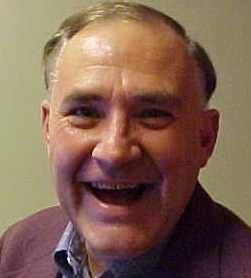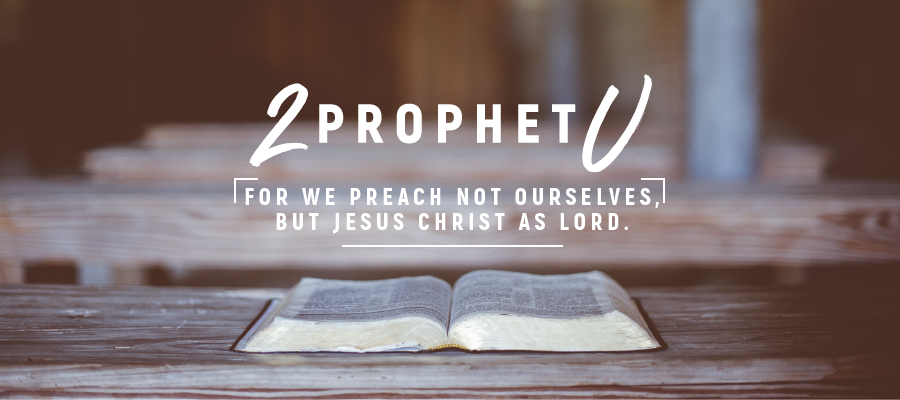Five Great Waves – Movements Among Evangelicals
I’ve lived through five great waves of movements among evangelicals and they are generally divided into decades. By movement I mean a fresh emphasis or direction taken by a significant number of evangelicals. I don’t think of them as “fads” though each one has had a faddish side to it. I have a hunch that they are prompted by God—to correct or initiate something God wants to restore to His church. They are cumulative in a way, with one movement leading to another and all of them still evident in the church. And I’m not suggesting that all churches have experienced all of these—I know there are thousands of churches who have not yet entered the 1960’s. What I’m trying to do this week is outline what I have witnessed as the “movements of the decades” among evangelicals. Finally, I should make the disclaimer that I know most “decades” last well into the next decade and thus cannot be neatly divided by New Year’s day every ten years. (For instance “the 60’s” didn’t really start until half way through the 60’s and they extended well into the 70’s.) But using these decades loosely here are the five waves I’ve experienced among evangelicals since 19
1960’s—“Ecumenical Cooperation”
The 1960’s were the “age of Aquarius” when a high tide of cooperation, idealism, peace and love swept over the church, and I saw it. Sure, most church folk opposed the long-haired hippies and condemned their “free love.” But at the same time, many churches gathered together believing they could resolve their differences and come up with a unified church. They called this dream COCU—the Church of Christ Uniting. They really thought a united front would be a greater witness to the world, and they tried to see if denominations could find enough common ground to merge together, or at least cooperate. Several denominations (like Presbyterians) who had divided North and South during the Civil war a hundred years earlier left their separate bedrooms and merged even though COCU “never happened.” But cooperation did spread to all denominations—even conservative ones. This was the heyday of the Aldersgate Publishing Association where Free Methodists, Nazarenes, Wesleyans and a half-dozen other denominations came together to plan and produce one unified cooperative curriculum to be used in all their denominations. Even many conservative separatist denominations cooperated or merged. In the 1960’s Paul W. Thomas, a headquarters wag known for his dry wit, often put it this way, “the urge to merge is on the surge.” My own denomination, The Wesleyan Church, was born in the 1960’s –a merger of three former denominations: The Wesleyan Methodist Church, the Pilgrim Holiness Church and the Reformed Baptists. In the 1960’s if you were on the front edge, you were into ecumenical cooperation.
1970’s—“Evangelism”
The 1970’s brought us a tsunami of evangelism. It was the heyday of Billy Graham’s success as he held great rallies across the entire world—including both Roman Catholics and Protestants (more effects of 60’s ecumenicalism). Scores of mini-me Billy Grahams staked out the smaller towns and held copycat crusades in the local coliseums and gymnasiums, even in towns as small as 30,000. Bill Bright’s Four Spiritual Laws swept the nation as people were trained in doing “personal evangelism” so they could “win the lost.” If you were a bit more heady and thought the Four Laws was shallow, you used the Evangelism Explosion’s soft cover padded green book to train your people in soul-winning. Beside these nationwide programs almost every denomination had their own copycat programs and tracts—mine produced “Have You Heard Today’s Good News—a not much improved adaptation of the Four Laws. And if you presented the salvation plan to a person who claimed they were already saved there was a backup plan: you whipped out Bill Bright’s other booklet—the blue one—and took them through Have you heard the wonderful news of the Spirit-Filled life? And there were conventions. Campus Crusade sponsored the giant evangelism convention in Dallas, Explo’72, where my friend, Paul Eshelman, pulled 85,000 Catholics and Protestants together in the Cotton Bowl for a week of training in evangelism. They were exciting days! Even the staid NAE (National Association of Evangelicals) got on board recruiting “evangelicals” into KEY’73, a cooperative interdenominational evangelistic effort designed to “confront people more fully and forcefully with the Gospel of Jesus Christ, by proclamation and demonstration by witness and ministry, and by word and deed.” Evangelism seemed so easy—just go through a little booklet and lead the people in a little prayer, “and leave the results to God,” as Bill Bright used to say. If you were surfing on the edge of the big wave of the 70’s you were into evangelism.
1980’s—Church Growth
All this emphasis on personal and mass evangelism was bound to have nay-sayers. Questions arose. Were these people really being saved who went forward at Billy Graham’s rallies? Were the people who read the little prayer in the booklet actually changed and then became solid church-members? The fuller think tank crowd like Donald McGavran, Ralph Winter and C. Peter Wagner called for evidence that these “converts” were actually converts. They wanted to know if they showed up at church and were “assimilated” into the body of Christ? Did these converts start tithing? And thus came what was to be called the “church growth movement”—a movement committed to counting numbers. Soon “decisions” weren’t enough—the church wanted converts to actually get into a church. Thus Churches focused on results. Even research. Some eventually abandoned personal evangelism altogether, adopting other means of getting them into church, including “attraction evangelism,” “seeker sensitive services,” and “entertainment evangelism.” Churches grew. Mega-churches emerged so fast that the list of churches over 1000 became impossible to keep updated—new ones were emerging every week. Some churches refused to swipe members from other churches saying, “The only fish you can count are those from the river.” But others were quite happy to swipe fish from the less interesting aquariums down the street. Downtown churches increasingly became full of “greyheads” and younger generations frequently chose to attend the exciting larger churches on the edges of the freeways with the sprawling parking lots. Pastors and denominational leaders issued ultimatums to churches: grow or die. Ronald Reagan served as President at this time, and the US seemed to be defeating the “evil empire.” Churches began to believe they might just be able to defeat the real evil empire—by converting worldlings and assimilating them into the church. If you claimed you’d won someone to Christ they wanted to know, “Where is he?” Converts were expected to do more than “read a prayer.” The most common question of the 80’s in every church became, “How many did you have?” Anyone who was anybody in the 1980’s was into church growth.
1990’s—Worship
The 1990’s brought a major interest in worship. For starters, the mega-churches needed more interesting and relevant styles of worship to attract new generations and unbelievers. But, what was born as a child of the church growth movement eventually grew up and swallowed up its birth mother. The “worship wars” emerged as new styles overthrew long-established formats. Organs, pianos, hymnals and song-leaders gave way to keyboards, “praise teams” (with variously colored sponge-covered microphones) and praise choruses projected with an overhead projector on the wall or the newly installed screen. These improvements gave way to still others, and we got drums and guitars, PowerPoint and video and a “worship band.” The musical portion of the service came to be called “worship” and became the prime factor in choosing a church, with preaching and programs taking lower spots. Churches now wanted to hire worship leaders and worship pastors and worship “producers” and the old ministers of music tried to reinvent themselves by switching from song leader/soloists to producers and media experts. Multiple services offered various styles—at first just two: traditional and contemporary. But eventually they included five or ten “venues” offering everything from cowboy worship to “high church worship.” Piping the pastor’s sermon into five different venues offering various styles emerged. People had strong opinions—they aligned with one or another “worship styles” just like they chose radio stations— rock, country, hip-hop, classical, and so forth. Conferences focused on worship, and conventions featured worship as the “central experience of the meeting.” Colleges (like mine) started planning “worship majors,” and more than a thousand books were written on worship—many eventually even got published (including my book). If you were on the front edge of the church in the 1990’s you were into worship.
2000’s— ?
So that brings us to this decade and my question for this week. When YOU write this sort of article 20 years from now what will you say about 2000-2010? It is, of course too soon to know—for only a perspective of history enables one to know with any sort of certainty. But we can try to guess can’t we? What do you guess is the current wave? When you look back in 2026 and label the great wave of this decade, what do you suppose you’ll say? I have a strong hunch—but I’m not saying yet. So, what do you think?
© 2006, Keith Drury
www.drurywriting.com/keith

Keith Drury served The Wesleyan Church headquarters in Christian Education and Youth leadership for 24 years before becoming a professor of religion at Indiana Wesleyan University. He is the author of more than a dozen books of practical spirituality, including Holiness for Ordinary People, Common Ground and Ageless Faith. Keith Drury wrote the Tuesday Column for 17 years (1995-2012), and many articles can be found on his blog “Drury Writing.”
Keith Drury retired from full time teaching in 2012. Keith is married to Sharon and has two adult sons and several grandchildren. He is retired in Florida with Sharon and enjoys cycling.
 Warren Wiersbe Podcast
Warren Wiersbe Podcast
- An error has occurred, which probably means the feed is down. Try again later.
 Sherwood Baptist Podcast
Sherwood Baptist Podcast
- An error has occurred, which probably means the feed is down. Try again later.
